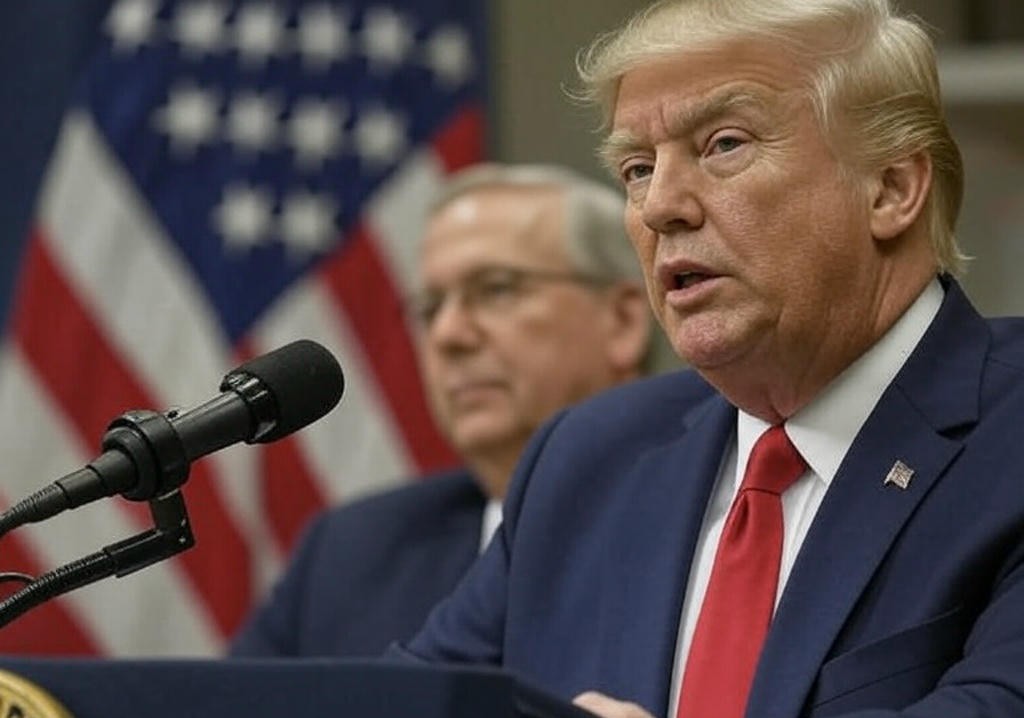President Donald Trump’s tariff policies have been a hot topic since he took office. Tariffs which are taxes on imported goods are used to protect local industries, create jobs and encourage fair trade. They can also raise prices for consumers and affect global markets. Recently U.S. Treasury Secretary Scott Bessent clarified that theres no plan to unilaterally reduce tariffs on China hinting at tough trade negotiations ahead. While Trump has softened some tariffs like exempting automakers from certain levies high tariffs on countries like Cambodia and Vietnam remain impacting industries such as solar imports. The International Monetary Fund (IMF) has warned that these policies could slow down global economic growth with U.S. growth expected to drop to 1.8% in 2025.

What Are Tariffs and Why Do They Matter?
Tariffs are taxes that a country places on goods coming from other nations. For example if a U.S. company imports solar panels from Cambodia it might pay a tariff to the U.S. government. These taxes make imported goods more expensive encouraging people to buy products made in the U.S. instead. Trump’s administration has used tariffs to boost American industries especially manufacturing and to address trade imbalances with countries like China.
Tariffs aren’t without downsides. They can increase costs for businesses that rely on imported materials which often leads to higher prices for consumers. For instance if solar panels become more expensive due to tariffs the cost of solar energy projects in the U.S. could rise. Tariffs can also strain relationships with trading partners who might respond with their own tariffs creating a cycle that affects global trade.
Trump’s Tariff Policies Strategy: A Mixed Approach
Trump’s tariff policies are a mix of tough measures and selective exemptions. On one hand he’s imposed steep tariffs on certain imports to protect U.S. industries. For example solar imports from Cambodia face tariffs as high as 3521% while those from Vietnam face up to 813%. These high rates aim to discourage reliance on foreign solar panels and promote U.S.-made alternatives. Similarly tariffs on Chinese goods remain significant with no immediate plans to lower them as confirmed by Scott Bessent. This suggests that the U.S. will push for tough trade deals with China focusing on fairness and protecting American workers.
On the other hand Trump has shown flexibility in some areas. For instance he recently exempted automakers from certain tariffs likely to support the U.S. auto industry which relies on global supply chains. This selective approach shows that while Trump is committed to his “America First” agenda he’s also willing to adjust policies to avoid harming key industries.
The Global Impact of Tariffs
Trump’s tariff policies don’t just affect the U.S.—they have a ripple effect worldwide. The IMF has raised concerns that these policies could disrupt global economic growth. When the U.S. imposes high tariffs other countries often retaliate with their own leading to trade wars. For example China might increase tariffs on U.S. agricultural products hurting American farmers. This back and forth can slow down trade reduce business confidence and weaken economies globally.
The IMF also predicts that U.S. economic growth will slow to 1.8% in 2025 partly due to tariff related disruptions. Higher tariffs can lead to inflation as businesses pass on increased costs to consumers. This could reduce consumer spending a key driver of economic growth. Additionally industries like solar energy which rely on affordable imports may face delays or higher costs slowing the transition to clean energy.
How Tariffs Affect Everyday Life
For the average person tariffs can feel like a distant policy but they hit close to home. When tariffs raise the cost of imported goods prices for everyday items like electronics, clothing or even groceries can go up. For example if tariffs make solar panels more expensive homeowners might pay more to install solar systems or energy companies might raise electricity rates. Similarly tariffs on Chinese goods could increase the cost of smartphones, toys or appliances since many of these are made in China.
Businesses also feel the pinch. Small companies that import materials might struggle to compete with larger firms leading to job losses or higher prices. However tariffs can benefit some workers especially in industries like manufacturing where U.S. companies gain an edge over foreign competitors.
What’s Next for Trump’s Tariff Policies?
Looking ahead Trump’s tariff policies will likely remain a cornerstone of his economic strategy. The focus on trade negotiations with China suggests that the U.S. will push for deals that prioritize American interests. The high tariffs on countries like Cambodia and Vietnam could strain diplomatic ties and disrupt industries that depend on global supply chains. The IMF’s warning about slower growth is a reminder that tariffs while protective come with risks.
For now the world is watching how these policies unfold. Will Trump stick to his hardline stance, or will he offer more exemptions to balance economic growth? Only time will tell but one thing is clear: tariffs will continue to shape markets, prices and global relationships.
Conclusion
Trump’s tariff policies are a bold move to protect U.S. industries and workers but they come with challenges. High tariffs on countries like Cambodia and Vietnam combined with tough trade talks with China aim to boost American manufacturing. However they also risk raising prices slowing growth and sparking trade disputes. As the U.S. navigates these policies the effects will be felt by businesses, consumers and economies worldwide. Understanding tariffs helps us see how decisions in Washington can impact our wallets and the world around us.
